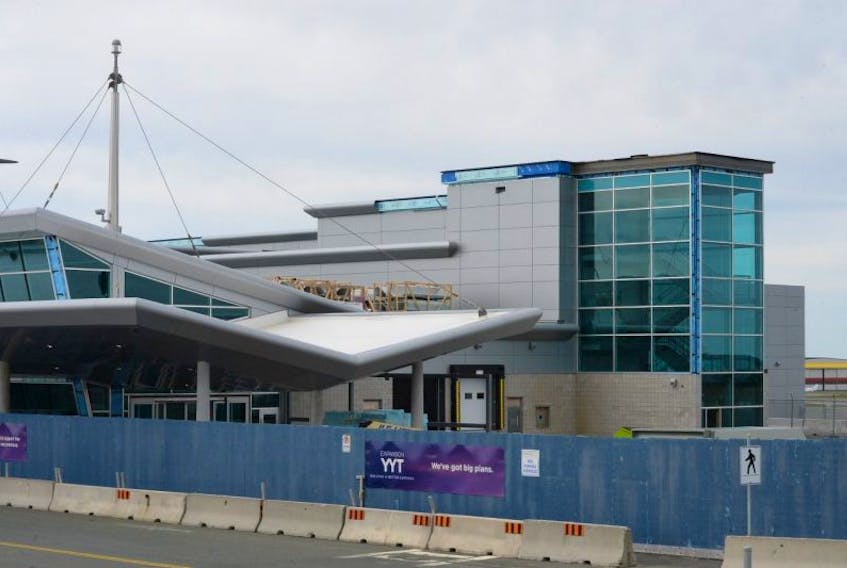Seven new dining options and a number of new retail locations will open in the east-end expansion of the terminal building as part of the first phase of the airport authority’s massive 10-year, $200-million improvement and expansion plan.
“When we started this process a couple of years ago we did a lot of market research and spoke to a lot of passengers and our employees to get a sense of what people were looking for,” explains Marie Manning, the airport’s director of marketing and business development.
“Overwhelmingly, the majority of people are looking for a mixture of local and national brands and, from a food perspective, looking for healthy food options as well as fast-food options and a restaurant-bar facility past security.”
Because the contracts are still being finalized, Manning isn’t able to confirm any of the franchises rumoured to be on the way. However, she confirmed that, with the exception of one food outlet, all of them are known commodities in the local marketplace.
“We’re pretty excited about it and I’m looking forward to actually being able to release who’s coming in,” she said, noting the news should break sometime in the next couple months.
Currently, the only food options in the departure lounge are a tiny Tim Hortons outlet operated by On the Go and a Jumping Bean kiosk.
There are so few options, Manning explained, because the airport as it exists was designed prior to 9-11, when security requirements weren’t as strict, which allowed people more time prior to going through security.
“Since that has happened we have Canadian Air Transport Security Authority (CATSA) in place. People want to get through security as soon as possible and then sit down and relax and have something to eat or go shopping.”
The new plan calls for the airport to abandon the master concessionaire program in favour of independently operated franchises. That means Compass Group owned and operated outlets in the food court area —Destinations, On The Fly and Coyotes Jack’s — are on the way out and the Tim Hortons franchise on the first floor will be taken over.
“We have moved away from that just to bring in a little bit more competition and also to enable us to ensure we have the brands that we want in here,” Manning said.
The departure lounge will more than double in size as part of the east end expansion and the pre-boarding screening area will move from its current home on the second floor — which will eventually be converted to concession space — to the first floor, directly to the right of the current check-in area.
“The problem with having it on the second floor is there’s no room to expand,” says Manning. “At least now we have that space and it enables us to have a little bit more room for queuing so there’s no one going down the stairs as we often see now.”
The second phase of the expansion, scheduled to start in 2018, will focus on the west end of the terminal and is aimed at improving services and facilities for arriving aircraft and passengers. By 2021, the airport terminal will be twice its current size and measure 387,000 square feet.
To finance the improvements, the authority secured a $60-million bond and a $25-million line of credit. This year, that line of credit was increased to $40 million.
All of that is debt that has to be paid off and, as a private but not-for-profit organization, Manning says, the airport’s “only real source of revenue for capital projects” is the airport improvement fee (AIF), which, as of July 1, increased from $30 to $35 for each passenger flying out of St. John’s.
In Ottawa, the AIF is $23 and has been since 1999. In Halifax, it’s $28. In Hamilton, which has approximately the same population as Newfoundland, the AIF has been $25 for the past four years.
Manning says the St. John’s fee is higher for a couple of reasons. First, the cost of construction here is higher than in other places, and the airport here doesn’t see the same volume of passengers.
The airport doesn’t feel as though it’s a burdensome cost and the passenger advisory panel they consulted with prior to increasing the fee assuaged their concerns.
“When we were increasing the AIF and talking to our stakeholders and our passengers, they were not concerned about the increase. The response we got back was, ‘Why are you worried about this increase? Look at what we’re getting.’”
Manning says the authority has no plans to increase the fee again before expansion is completed, but that it will remain in place as the long-term debt is paid down and as the need continues for capital projects focused on upgrades, maintenance and meeting safety regulations.
Twitter: kennoliver79









